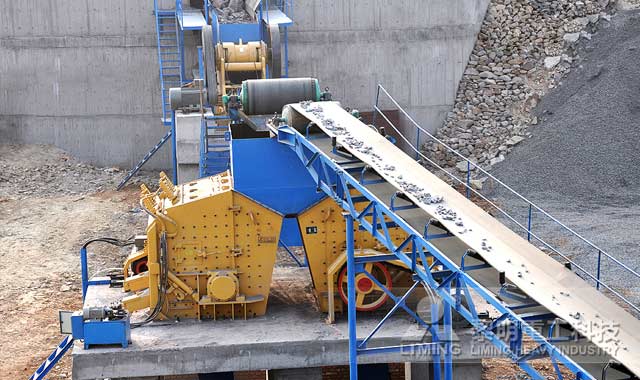Potassium feldspar, often referred to as K-feldspar, is a commonly occurring mineral found in many types of rocks, particularly in igneous and metamorphic rocks. It is an essential raw material in various industries, including ceramics, glass manufacturing, and as a flux in the production of aluminum. To extract potassium feldspar for these applications, stone crushers play a crucial role in the production process.
Potassium Feldspar:
Potassium feldspar is a type of feldspar mineral that belongs to the group of silicate minerals known as tectosilicates. It is primarily composed of potassium, aluminum, and silica, with the chemical formula KAlSi3O8. This mineral is a significant source of potassium, an essential nutrient for plant growth, making it valuable in agriculture as well.

Stone Crusher in Potassium Feldspar Production:
Stone crushers are mechanical devices designed to reduce large rocks into smaller pieces, gravel, or dust. In the production of potassium feldspar, stone crushers are used to crush the mineral-bearing rocks and extract the valuable potassium feldspar crystals. Here’s how the process typically works:
- Mining and Quarrying: The first step in potassium feldspar production is the extraction of the mineral from geological deposits. These deposits can be found in various locations worldwide. Mining operations involve drilling, blasting, and excavation to access the potassium feldspar-bearing rocks.
- Primary Crushing: Once the rocks are extracted from the quarry, they are transported to a primary crusher. This crusher is designed to break down large rocks into smaller, more manageable pieces. It uses mechanical force to crush the rocks into a size suitable for further processing.
- Secondary Crushing: After primary crushing, the material may undergo secondary crushing to further reduce its size. This step ensures that the potassium feldspar crystals are adequately liberated from the surrounding rock matrix.
- Screening and Sorting: The crushed material is then screened to separate the potassium feldspar crystals from the remaining rock fragments. This process involves passing the material through various screens to classify it based on particle size. The feldspar-rich material is separated for further processing.
- Grinding and Beneficiation: The separated potassium feldspar undergoes grinding to achieve the desired particle size for its intended application. Beneficiation processes may also be employed to remove impurities and enhance the quality of the final product.
- Packaging and Distribution: Once the potassium feldspar is processed to the desired specifications, it is packaged for distribution to various industries. It may be shipped as bulk material or further processed into specialized products such as ceramics, glass, and pottery.
The production of potassium feldspar relies heavily on the use of stone crushers to extract and process the mineral-bearing rocks. These crushers play a vital role in breaking down large rocks into smaller, more manageable pieces, making it possible to obtain valuable potassium feldspar crystals that are essential in various industrial applications. The availability of potassium feldspar is crucial for industries such as ceramics, glass manufacturing, and agriculture, highlighting the significance of stone crushers in this process.
